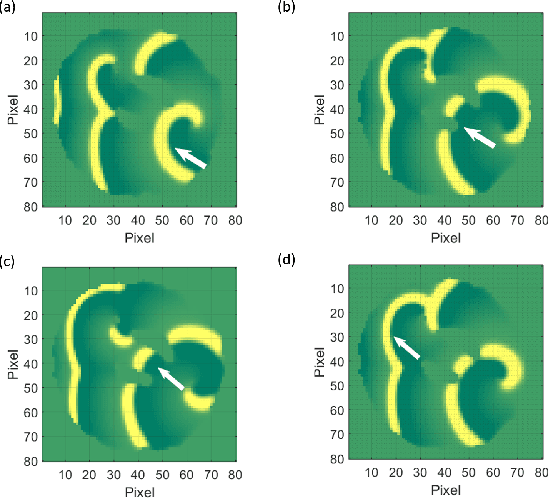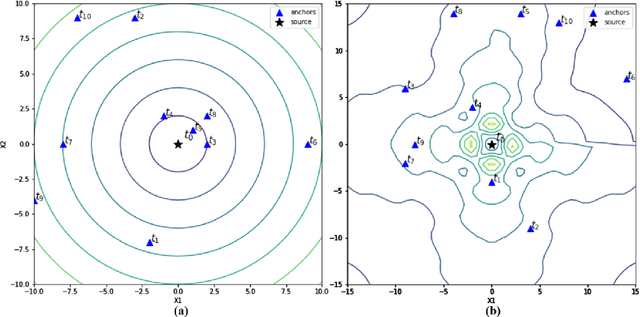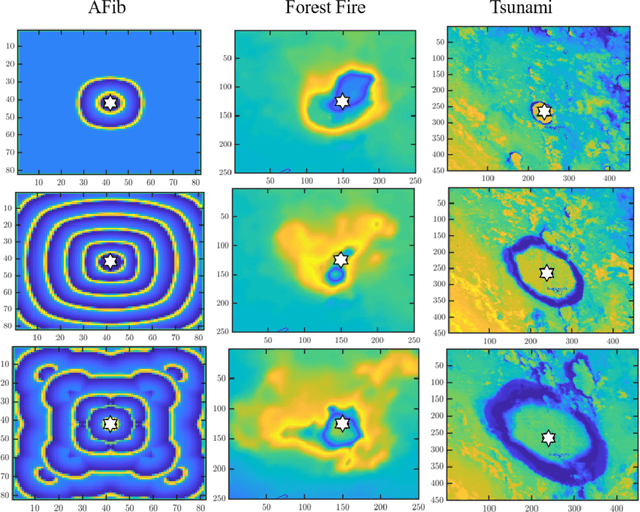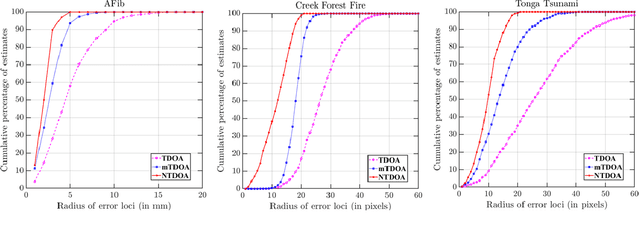Data-Driven Nonlinear TDOA for Accurate Source Localization in Complex Signal Dynamics
Paper and Code
Aug 03, 2023



The complex and dynamic propagation of oscillations and waves is often triggered by sources at unknown locations. Accurate source localization enables the elimination of the rotor core in atrial fibrillation (AFib) as an effective treatment for such severe cardiac disorder; it also finds potential use in locating the spreading source in natural disasters such as forest fires and tsunamis. However, existing approaches such as time of arrival (TOA) and time difference of arrival (TDOA) do not yield accurate localization results since they tacitly assume a constant signal propagation speed whereas realistic propagation is often non-static and heterogeneous. In this paper, we develop a nonlinear TDOA (NTDOA) approach which utilizes observational data from various positions to jointly learn the propagation speed at different angles and distances as well as the location of the source itself. Through examples of simulating the complex dynamics of electrical signals along the surface of the heart and satellite imagery from forest fires and tsunamis, we show that with a small handful of measurements, NTDOA, as a data-driven approach, can successfully locate the spreading source, leading also to better forecasting of the speed and direction of subsequent propagation.
 Add to Chrome
Add to Chrome Add to Firefox
Add to Firefox Add to Edge
Add to Edge